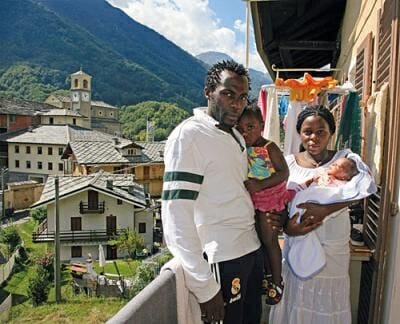
Aug 26, 2015 | Focolare Worldwide
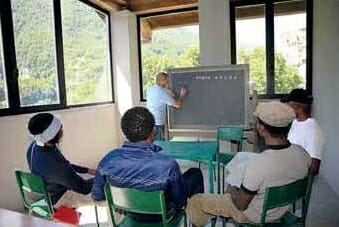 Five years ago, the town was classified as having one of the lowest socio-economic communities in the Piemonte region. But the entire community learned about hospitality towards others and today, 30 refugees, almost all Africans, besides a family from Kosovo with three children, have been living for eight months now, in a housing unit owned by the Cottolengo Institute. “We have adopted them,” confided two eighty year olds sitting in the town square. They had done so during the war, specified the President of the “Pro Loco” organisation, with the Jews and the members of the Italian resistance movement. History repeats itself. The mayor, Lisa Giacomo did not have to convince himself and the 180 residents of the village. Out of these, only 90 live in Lemie all year round. It had already happened in 2011, when the problem of hosting the migrants and refugees arriving on the Italian coasts with rusty boats still was not such a burning issue. Already then, for Lemie, that arrival of ‘friends’ had symbolized the rebirth of the community The 12 children taken care of by educators and the parish priest were baptised in the parish Church during a ceremony which went down in the history of the town. It was a feast. All the families with the children were welcomed by families and other children of those alpine valleys.
Five years ago, the town was classified as having one of the lowest socio-economic communities in the Piemonte region. But the entire community learned about hospitality towards others and today, 30 refugees, almost all Africans, besides a family from Kosovo with three children, have been living for eight months now, in a housing unit owned by the Cottolengo Institute. “We have adopted them,” confided two eighty year olds sitting in the town square. They had done so during the war, specified the President of the “Pro Loco” organisation, with the Jews and the members of the Italian resistance movement. History repeats itself. The mayor, Lisa Giacomo did not have to convince himself and the 180 residents of the village. Out of these, only 90 live in Lemie all year round. It had already happened in 2011, when the problem of hosting the migrants and refugees arriving on the Italian coasts with rusty boats still was not such a burning issue. Already then, for Lemie, that arrival of ‘friends’ had symbolized the rebirth of the community The 12 children taken care of by educators and the parish priest were baptised in the parish Church during a ceremony which went down in the history of the town. It was a feast. All the families with the children were welcomed by families and other children of those alpine valleys.  “Of course, at the start we were a bit surprised,” Lisa explained, “the population here has a a very high age bracket average, and it’s not easy to open oneself to others. Or at least, this was not the case. I didn’t have to give a lot of explanations since no one asked any questions. Giving hospitality seemed but a natural thing .” And the situation today is still the same as in 2011. And as in the past, the men and woman that arrived from Libya and other sub-Saharian countries will have to work, and make themselves useful. “With the Province of Turin in 2011 we had also implemented some job offers. Now some are applying for ‘restitution volunteer work’ which is useful to them and also to us.” the mayor remarked. And not only do these ‘refugee friends’ wish to stay in Italy, but the community itself is asking them to stay. “The citizens immediately accepted them, but what’s more, welcomed them,” confirmed Lisa, “and a couple of residents found jobs as educators with an association related to a cooperative. Problems? “Only bureaucratic ones. They applied for protection as refugees, but the time frames are very long.” Then the transportation issues: “I will ask the agencies managing the coaches for Turin to help them, since I think it would useless to make them pay the bus tickets for Turin.” On asking the mayor if the village has been reborn due to the migrants, he smiles and opens his arms . “Look at this valley. It is full of second homes, that open only in summer. Many young people continue to leave, even if their bond with valley is still strong. The new people who have come have brought some liveliness. Just go to the playground on a sunny afternoon and finally you will see children playing, shouting, enjoying themselves. They have even saved the school.” Excuse me? “Certainly. Five children more in school allowed the school to keep more teachers and a better quality in education. What else can we ask of these friends we have welcomed among us? The family has been extended and Lemie is no longer small and marginal. We want to be a different village, new and open to all.” Original article in Italian: Città Nuova online
“Of course, at the start we were a bit surprised,” Lisa explained, “the population here has a a very high age bracket average, and it’s not easy to open oneself to others. Or at least, this was not the case. I didn’t have to give a lot of explanations since no one asked any questions. Giving hospitality seemed but a natural thing .” And the situation today is still the same as in 2011. And as in the past, the men and woman that arrived from Libya and other sub-Saharian countries will have to work, and make themselves useful. “With the Province of Turin in 2011 we had also implemented some job offers. Now some are applying for ‘restitution volunteer work’ which is useful to them and also to us.” the mayor remarked. And not only do these ‘refugee friends’ wish to stay in Italy, but the community itself is asking them to stay. “The citizens immediately accepted them, but what’s more, welcomed them,” confirmed Lisa, “and a couple of residents found jobs as educators with an association related to a cooperative. Problems? “Only bureaucratic ones. They applied for protection as refugees, but the time frames are very long.” Then the transportation issues: “I will ask the agencies managing the coaches for Turin to help them, since I think it would useless to make them pay the bus tickets for Turin.” On asking the mayor if the village has been reborn due to the migrants, he smiles and opens his arms . “Look at this valley. It is full of second homes, that open only in summer. Many young people continue to leave, even if their bond with valley is still strong. The new people who have come have brought some liveliness. Just go to the playground on a sunny afternoon and finally you will see children playing, shouting, enjoying themselves. They have even saved the school.” Excuse me? “Certainly. Five children more in school allowed the school to keep more teachers and a better quality in education. What else can we ask of these friends we have welcomed among us? The family has been extended and Lemie is no longer small and marginal. We want to be a different village, new and open to all.” Original article in Italian: Città Nuova online
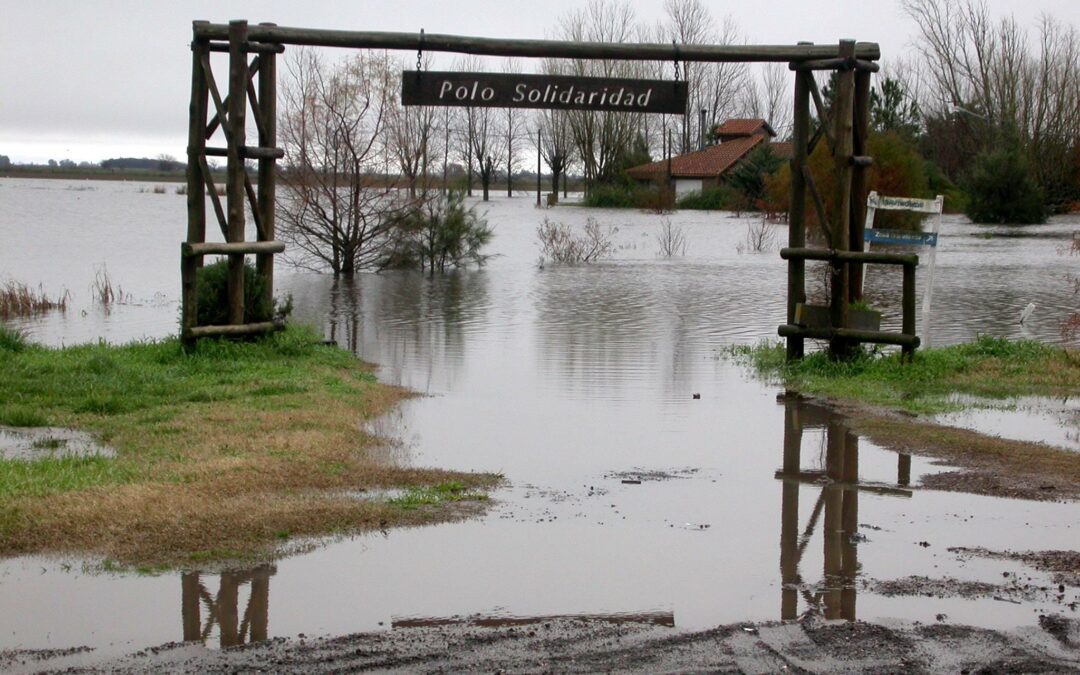
Aug 25, 2015 | Focolare Worldwide
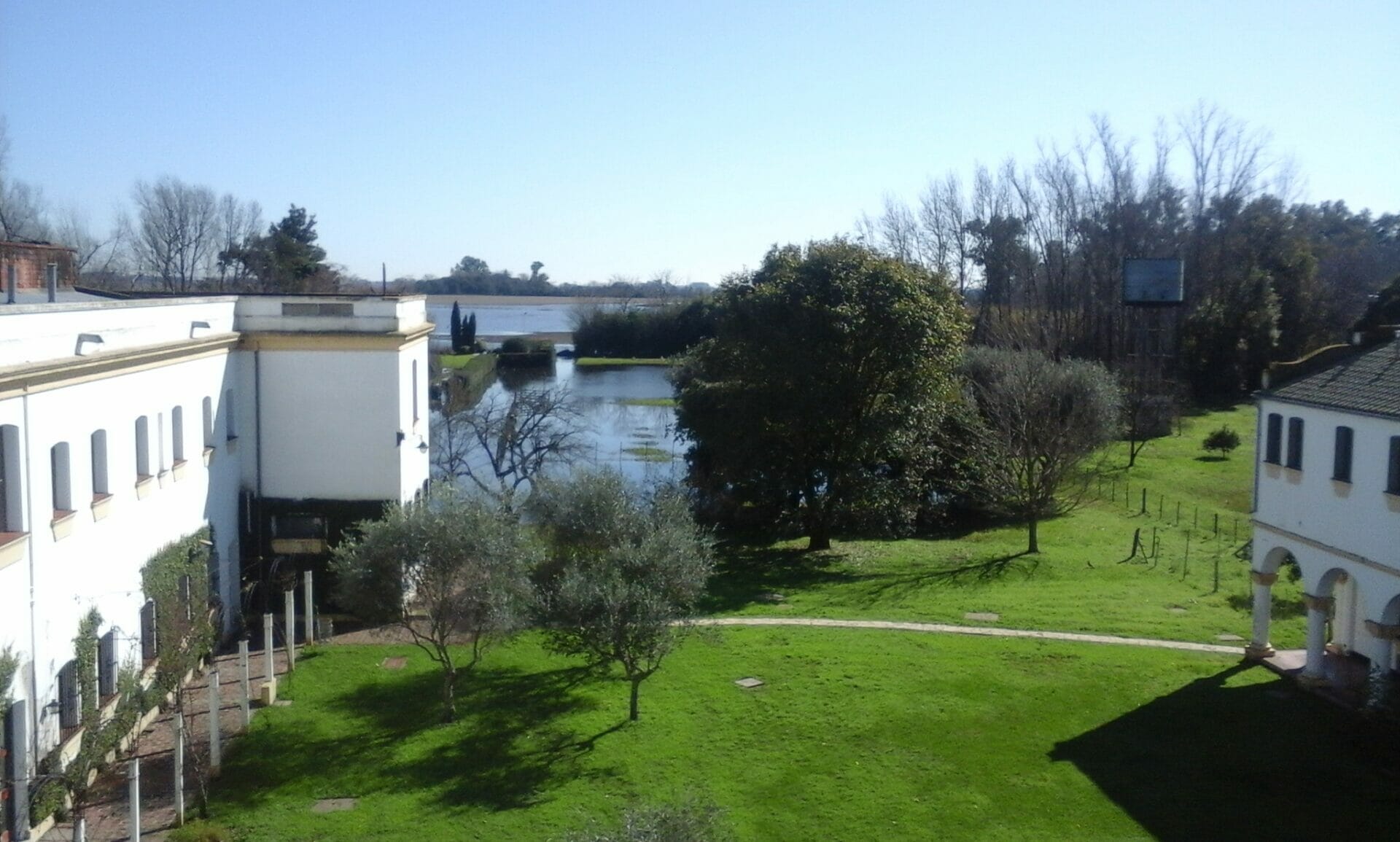 The Argentine provinces of Buenos Aires and Santa Fe were recently hit with severe rainfall. The local news media says that 20,000 people were affected and more than 4, 000 evacuees. Some roads are closed and others have limited access. The rains are unrelenting and a weather emergency is in force. However, in some regions the rain has begun to lessen. Mariapolis Lia, nestled in the Argentine pampas region, is literally submerged in water along with the Solidaridad Industrial Park where several Economy of Communion Businesses are located. “The water has flooded two buildings in the Park and also the garage of a third building,” Jorge Perrin writes from Solidad Industrial Park. Another two buildings are at risk: the water level has risen to a few centimetres. In the other buildings water has flooded the basements, but the living quarters are secure for the moment. The Primicias greenhouses along the road have also been flooded and the production completely lost, exept for a section of tomatoes. Pasticcino (coffee biscuits) is moving its production with the help of tractor from Primicias. For the moment the water has not flooded any of the dwellings in the Mariapolis itself.”
The Argentine provinces of Buenos Aires and Santa Fe were recently hit with severe rainfall. The local news media says that 20,000 people were affected and more than 4, 000 evacuees. Some roads are closed and others have limited access. The rains are unrelenting and a weather emergency is in force. However, in some regions the rain has begun to lessen. Mariapolis Lia, nestled in the Argentine pampas region, is literally submerged in water along with the Solidaridad Industrial Park where several Economy of Communion Businesses are located. “The water has flooded two buildings in the Park and also the garage of a third building,” Jorge Perrin writes from Solidad Industrial Park. Another two buildings are at risk: the water level has risen to a few centimetres. In the other buildings water has flooded the basements, but the living quarters are secure for the moment. The Primicias greenhouses along the road have also been flooded and the production completely lost, exept for a section of tomatoes. Pasticcino (coffee biscuits) is moving its production with the help of tractor from Primicias. For the moment the water has not flooded any of the dwellings in the Mariapolis itself.” 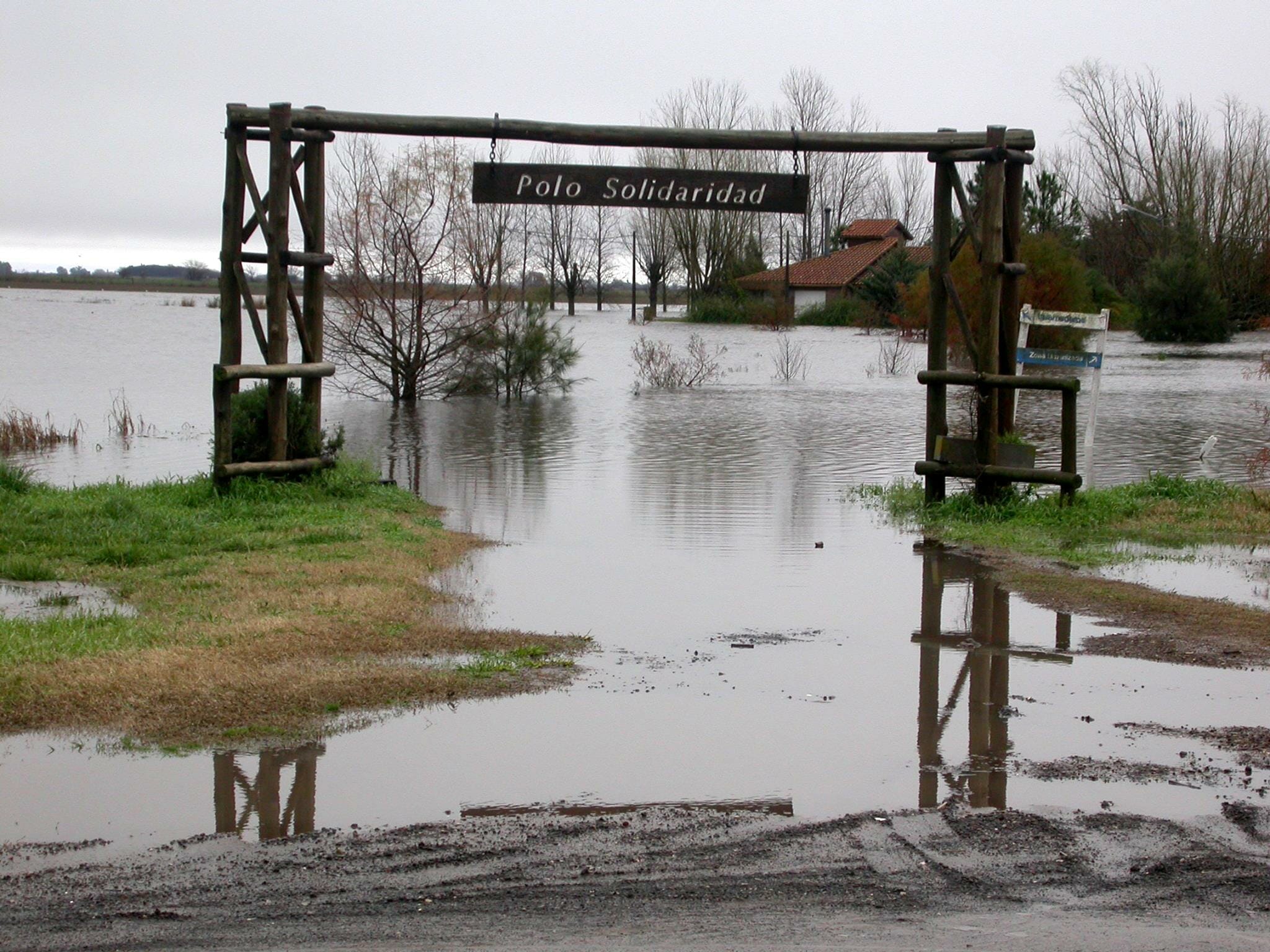 In many of the provinces of Buenos Aires the lagoons are connected with one another; the drainage channels are insufficient and the stretches of water become like oceans. “The channel of the Mariapolis and the Industrial Park had been cleaned recently and function well. But the problem of the road than links the Mariapolis to the nearby village is another story. It drains from another part. Access between the Mariapolis and the local village is completely flooded and it only possible to go from place to place in specialised vehicles.” “The solidarity amongst us is extraordinary,” he adds. The only automobiles capable of driving through the mud are the tractor and the Mariapolis van. So they’re always on the move transporting people to work, to school, to make purchases for others, or to take supplies to people, and so on. Throughout these days, in the countless telephone calls, in the communion amongst us, in the peaceful spirit with which we face every situation, I understand once again what a great family we are!” For enquiries on how to help.:polosolidaridad@gmail.com
In many of the provinces of Buenos Aires the lagoons are connected with one another; the drainage channels are insufficient and the stretches of water become like oceans. “The channel of the Mariapolis and the Industrial Park had been cleaned recently and function well. But the problem of the road than links the Mariapolis to the nearby village is another story. It drains from another part. Access between the Mariapolis and the local village is completely flooded and it only possible to go from place to place in specialised vehicles.” “The solidarity amongst us is extraordinary,” he adds. The only automobiles capable of driving through the mud are the tractor and the Mariapolis van. So they’re always on the move transporting people to work, to school, to make purchases for others, or to take supplies to people, and so on. Throughout these days, in the countless telephone calls, in the communion amongst us, in the peaceful spirit with which we face every situation, I understand once again what a great family we are!” For enquiries on how to help.:polosolidaridad@gmail.com
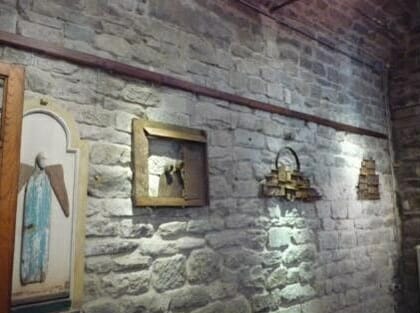
Aug 24, 2015 | Non categorizzato
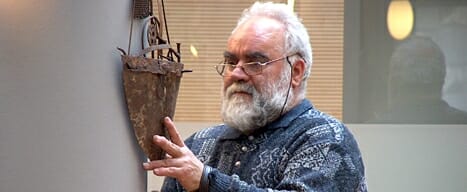 Thousands come together around the work of this Italian artist that is so in tune with Pope Francis’s Laudato sì. For years Ciro has been recycling scrap material for his creations.
Thousands come together around the work of this Italian artist that is so in tune with Pope Francis’s Laudato sì. For years Ciro has been recycling scrap material for his creations. 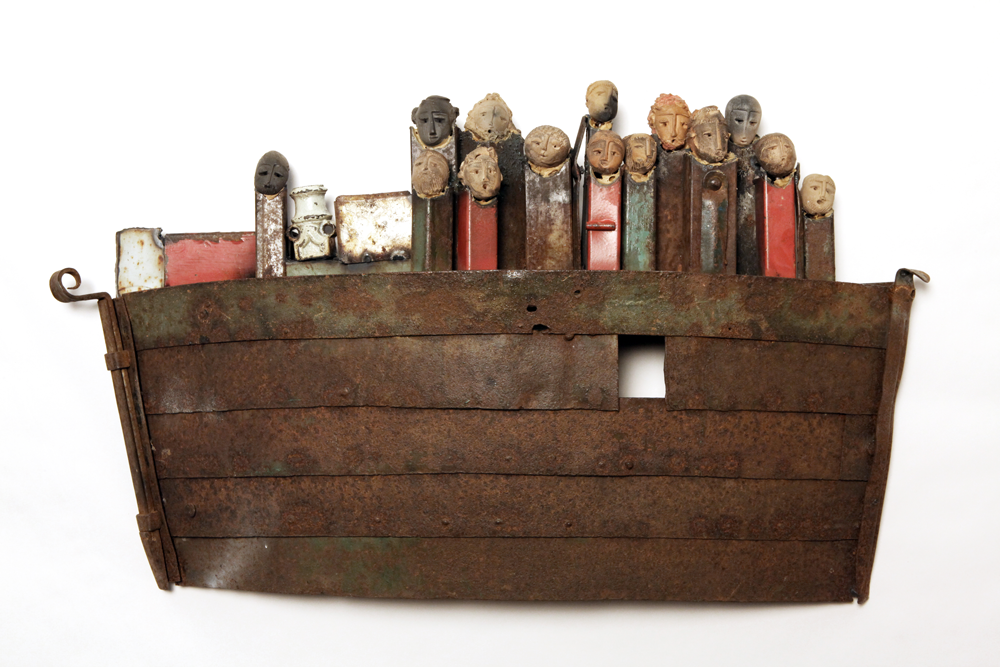 Known as Ciro, Roberto Cipollone not only welcomes visitors, but runs workshops for young and old that bring them into direct contact with the materials that will be transformed and modeled together: “a pure way of seeing, simple, direct contact with the beautiful without any tinsel,” says the artist. Besides the studio in Loppiano, which is the true creative workshop, a permanent workshop has been set up by Sergio Pandolfi.
Known as Ciro, Roberto Cipollone not only welcomes visitors, but runs workshops for young and old that bring them into direct contact with the materials that will be transformed and modeled together: “a pure way of seeing, simple, direct contact with the beautiful without any tinsel,” says the artist. Besides the studio in Loppiano, which is the true creative workshop, a permanent workshop has been set up by Sergio Pandolfi.

Ciro’s exhibition at Camaldoli
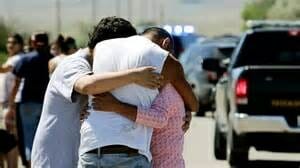
Aug 23, 2015 | Non categorizzato
 “Outside the centrifugal action of love, human beings seem to hold on to whatever causes division. They find millions of reasons, through religion itself, to set themselves apart, nullifying that freedom of movement that had been restored by Jesus when he brought down the walls of division and established that there would no longer be neither Greek nor Jew, neither slave nor master, neither male nor female – but God would be in all, and all would be in God. (…) That is love’s goal: that is the goal of existence, to make all one. To make all the Oneness that is God. By the impulse of Divine Love, existence, all of history became a return march towards unity. Everything comes from God; everything returns to God. Making yourself one with a neighbour means disappearing in him, such that between God, my neighbour and me a direct passageway is established, through my elimination, an unobstructed descent – from Oneness to the other: and so I find God in that neighbour. The neighbour is like the temple that ignites God’s light. So, I find God in the Sacrament of the Altar and in the person of my neighbour, through the effect of love. The neighbour breaks down the barriers and, in the breach, allows life to flow: the life that is God. The neighbour is ianua caeli, “gate of Paradise”. There are Christians who go to serve the least, in the lowest social classes, not so much to convert them, but to convert themselves: giving love in the form of service (to the ailing, the unemployed, the elderly – all the social refuse as they are labeled), and they find Christ. Much more than they can ever give, therefore. They offer a loaf of bread and find the Father. They convert both the helpers and also the assisted. They become holy as they bless their neighbours. Therefore, you rise to God by descending beneath every human level, to serve all people from down there, on whatever plane they may be; whereas, the Jewish priest who did not look upon the unfortunate of this earth because his gaze was fixed on the God of Heaven, never found neither God nor neighbour. He never found God because he was never turned towards his neighbour. And this is a way of proceeding from the Father who proclaims his glory in highest heaven by allowing his Son to be born in the most humble of shelters: a stable, thus establishing a connection between stars and stables through the divinizing action of love. Thus, the last shall be the first in an overturning of logic, or rather, God’s way of calculating; his counting starts from the least while we start counting from the most. What is first for us becomes last for him, and what is last for us becomes first for him. And so wealth, power, glory which we consider to be first and foremost, God considers them to be last; they count for nothing and have to wait in line. This is the actual yardstick for measuring people and things.” (From Igino Giordani. Il fratello,(Rome: Città Nuova, 2011), pp.78-80.
“Outside the centrifugal action of love, human beings seem to hold on to whatever causes division. They find millions of reasons, through religion itself, to set themselves apart, nullifying that freedom of movement that had been restored by Jesus when he brought down the walls of division and established that there would no longer be neither Greek nor Jew, neither slave nor master, neither male nor female – but God would be in all, and all would be in God. (…) That is love’s goal: that is the goal of existence, to make all one. To make all the Oneness that is God. By the impulse of Divine Love, existence, all of history became a return march towards unity. Everything comes from God; everything returns to God. Making yourself one with a neighbour means disappearing in him, such that between God, my neighbour and me a direct passageway is established, through my elimination, an unobstructed descent – from Oneness to the other: and so I find God in that neighbour. The neighbour is like the temple that ignites God’s light. So, I find God in the Sacrament of the Altar and in the person of my neighbour, through the effect of love. The neighbour breaks down the barriers and, in the breach, allows life to flow: the life that is God. The neighbour is ianua caeli, “gate of Paradise”. There are Christians who go to serve the least, in the lowest social classes, not so much to convert them, but to convert themselves: giving love in the form of service (to the ailing, the unemployed, the elderly – all the social refuse as they are labeled), and they find Christ. Much more than they can ever give, therefore. They offer a loaf of bread and find the Father. They convert both the helpers and also the assisted. They become holy as they bless their neighbours. Therefore, you rise to God by descending beneath every human level, to serve all people from down there, on whatever plane they may be; whereas, the Jewish priest who did not look upon the unfortunate of this earth because his gaze was fixed on the God of Heaven, never found neither God nor neighbour. He never found God because he was never turned towards his neighbour. And this is a way of proceeding from the Father who proclaims his glory in highest heaven by allowing his Son to be born in the most humble of shelters: a stable, thus establishing a connection between stars and stables through the divinizing action of love. Thus, the last shall be the first in an overturning of logic, or rather, God’s way of calculating; his counting starts from the least while we start counting from the most. What is first for us becomes last for him, and what is last for us becomes first for him. And so wealth, power, glory which we consider to be first and foremost, God considers them to be last; they count for nothing and have to wait in line. This is the actual yardstick for measuring people and things.” (From Igino Giordani. Il fratello,(Rome: Città Nuova, 2011), pp.78-80.
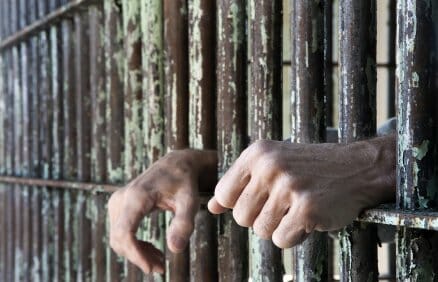
Aug 22, 2015 | Focolare Worldwide
 “Since 1994 I have worked in the Pastoral Jail of the Archdiocese of Santiago in Cuba which also includes the city of Guantanamo. Together with other volunteers we see to their needs and those of their relatives, because these people are really the poorest among the poor. In 2007, when I encountered the spirituality of unity, it was if a ray of light penetrated me, and more than ever enlightened my service in jail and made me understand that in life we have to look for what unites and not what divides us. Sharing this way of life with others helped me a lot. Some said: «How can you deal with murderers and rapists, knowing that most of them do not even take notice of those who try to give them a hand…». This is true. At times it is so, but the spirituality of Chiara Lubich helps me to see in each of them the figure of Jesus crucified and abandoned. We only have to sow that small seed of the Gospel, without expecting anything in return. This conviction gives me strength and support and makes me feel less alone. It prevents me from falling into the temptation of leaving this service, and I can see that in the end, I will always receive more than what I have given. It has been some time now since we started to bring the leaflet of the Word of Life every month to the prisoners and also their families. After some time, to our great surprise, we found that in the special surveillance sector, a small community of prisoners was created, led by a young man. Together they discuss about the contents of the leaflet and during the month they try to put it into practice and make really significant experiences. “In my youth–Y recounted– I committed some crimes for which I am serving a life sentence. I am in the Guantanamo city jail (not far from the ill-famed American high-security jail). I found my faith in God through the members of the Focolare Movement, who for some years now have been visiting me regularly. I also wrote my story, where I talk about my meeting with God and of how it rekindled the hope in unending Life. Every day I try to put the Word of Life of the month into practice.» One day, another prisoner, Y, told us on the phone: «I’m down with fever and have a strong headache. I really needed to talk to you and took the opportunity of a permit to call you. Talking to you is like a balsam for me. » I ensured him that we were praying for him, and that Jesus came to save us, notwithstanding the life we live on earth. He said that he was also convinced of this and added «this is what I pray for daily, and it gives me the strength to go on loving everyone.” (Carmen, Santiago di Cuba)
“Since 1994 I have worked in the Pastoral Jail of the Archdiocese of Santiago in Cuba which also includes the city of Guantanamo. Together with other volunteers we see to their needs and those of their relatives, because these people are really the poorest among the poor. In 2007, when I encountered the spirituality of unity, it was if a ray of light penetrated me, and more than ever enlightened my service in jail and made me understand that in life we have to look for what unites and not what divides us. Sharing this way of life with others helped me a lot. Some said: «How can you deal with murderers and rapists, knowing that most of them do not even take notice of those who try to give them a hand…». This is true. At times it is so, but the spirituality of Chiara Lubich helps me to see in each of them the figure of Jesus crucified and abandoned. We only have to sow that small seed of the Gospel, without expecting anything in return. This conviction gives me strength and support and makes me feel less alone. It prevents me from falling into the temptation of leaving this service, and I can see that in the end, I will always receive more than what I have given. It has been some time now since we started to bring the leaflet of the Word of Life every month to the prisoners and also their families. After some time, to our great surprise, we found that in the special surveillance sector, a small community of prisoners was created, led by a young man. Together they discuss about the contents of the leaflet and during the month they try to put it into practice and make really significant experiences. “In my youth–Y recounted– I committed some crimes for which I am serving a life sentence. I am in the Guantanamo city jail (not far from the ill-famed American high-security jail). I found my faith in God through the members of the Focolare Movement, who for some years now have been visiting me regularly. I also wrote my story, where I talk about my meeting with God and of how it rekindled the hope in unending Life. Every day I try to put the Word of Life of the month into practice.» One day, another prisoner, Y, told us on the phone: «I’m down with fever and have a strong headache. I really needed to talk to you and took the opportunity of a permit to call you. Talking to you is like a balsam for me. » I ensured him that we were praying for him, and that Jesus came to save us, notwithstanding the life we live on earth. He said that he was also convinced of this and added «this is what I pray for daily, and it gives me the strength to go on loving everyone.” (Carmen, Santiago di Cuba)
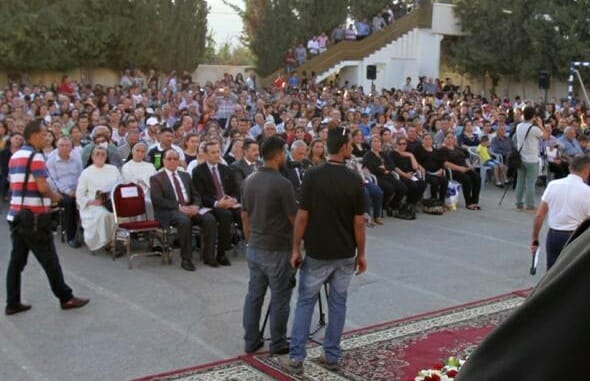
Aug 21, 2015 | Focolare Worldwide
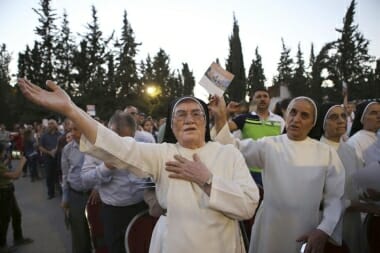
Aug. 8, 2015: Iraqi Christian refugees attend an outdoor prayer service to mark a year since their displacement, in Fuheis near Amman, Jordan. (AP Photo/Raad Adayleh)
 “Forty people came, including the Mayor of the city and several other civil authorities. The Cardinal, Patriarchs and Bishops wanted to spend some time in prayer in our chapel: a solemn moment.” This opportunity for Christians to be gathered together in prayerful unity was a strong summons especially during this period of great uncertainty in the Middle East. “A moment of relief for a martyred land.”
“Forty people came, including the Mayor of the city and several other civil authorities. The Cardinal, Patriarchs and Bishops wanted to spend some time in prayer in our chapel: a solemn moment.” This opportunity for Christians to be gathered together in prayerful unity was a strong summons especially during this period of great uncertainty in the Middle East. “A moment of relief for a martyred land.”
Aug 20, 2015 | Focolare Worldwide
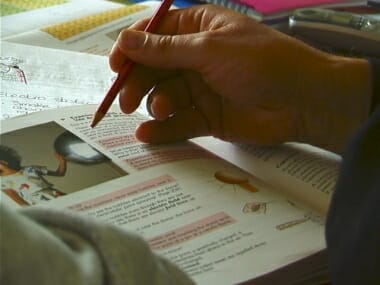
Aug 19, 2015 | Focolare Worldwide
 “My name is Marco and I am 35 years old. Since 2008 I have been working as a substitute Catholic religion teacher. Unfortunately, due to bureaucratic reasons, I work only sporadically, on an average of about two months a year. This year I was called for three days in a school, for a week in another school after some months, and then for a few days elsewhere. On the average, it was about two months a year. In my capacity as an employee of the State I am not allowed to have two jobs and have to be available all the time when I am called to teach, since – should I refuse – I would be surpassed by others. I live with my parents and have a lot of free time, I take care of various house chores, some other commitments in the parish, and the education of youth and adults of an oratory where I coordinate the Word of Life monthly meeting; I do volunteer work in a home for the aged and am a member of the diocesan office for ecumenism and interreligious dialogue. All these activities keep me busy and active. But when work is scarce, a subtle veil of discouragement and low self-esteem grow in me, and everything always seems to become more difficult. One day, a friend, knowing about my work situation, phoned to say that he had met a student who needed tutoring in Latin and Greek. My friend knew about my educational background and was certain that I could easily fill the post. In effect, after High School I had never abandoned my knowledge of the classical languages. In fact, in order to understand the Old Testament better, I had recently even started to study biblical Jewish. Initially my first reaction was to refuse the offer, but I was given 10 days to think it over. Then, the student would have turned to other private tutors. Those who are familiar with the art of translating old languages are aware that translating for oneself or trying one’s hand in translating is one thing, and that giving private lessons to a person who needs to progress and achieve good grades on the report card, is another thing altogether. I needed a job even though this meant revising the grammar rules of Greek and Latin in ten days, and learning to teach it. To be able to succeed I would have had to drop all my other commitments for seven days and study from 8-10 hours a day. It was like a leap in the dark. And so it was: I started to study like crazy. And then, after a few days, the same friend offered me a room in his house, and even the keys to the house. Another friend who came to know about my “new job” introduced me also to his son who needed tutoring. But more than a teacher, he needed tutoring not only in Latin and Greek but also in philosophy, Italian and English literature, in short, the whole humanistic area. He was a desperate case. In fact he was a very problematic person in terms of relationships, and in the last year of high school had been given an “unclassified” grade. I entrusted myself to God and accepted to be his tutor. Today he has started to get a set of 8s and 9s and his enthusiasm is growing. Even his personal relationships have started to improve. I recently worked as substitute teacher for a month, continue to give private lessons in the afternoon and also keep up with my previous commitments.”
“My name is Marco and I am 35 years old. Since 2008 I have been working as a substitute Catholic religion teacher. Unfortunately, due to bureaucratic reasons, I work only sporadically, on an average of about two months a year. This year I was called for three days in a school, for a week in another school after some months, and then for a few days elsewhere. On the average, it was about two months a year. In my capacity as an employee of the State I am not allowed to have two jobs and have to be available all the time when I am called to teach, since – should I refuse – I would be surpassed by others. I live with my parents and have a lot of free time, I take care of various house chores, some other commitments in the parish, and the education of youth and adults of an oratory where I coordinate the Word of Life monthly meeting; I do volunteer work in a home for the aged and am a member of the diocesan office for ecumenism and interreligious dialogue. All these activities keep me busy and active. But when work is scarce, a subtle veil of discouragement and low self-esteem grow in me, and everything always seems to become more difficult. One day, a friend, knowing about my work situation, phoned to say that he had met a student who needed tutoring in Latin and Greek. My friend knew about my educational background and was certain that I could easily fill the post. In effect, after High School I had never abandoned my knowledge of the classical languages. In fact, in order to understand the Old Testament better, I had recently even started to study biblical Jewish. Initially my first reaction was to refuse the offer, but I was given 10 days to think it over. Then, the student would have turned to other private tutors. Those who are familiar with the art of translating old languages are aware that translating for oneself or trying one’s hand in translating is one thing, and that giving private lessons to a person who needs to progress and achieve good grades on the report card, is another thing altogether. I needed a job even though this meant revising the grammar rules of Greek and Latin in ten days, and learning to teach it. To be able to succeed I would have had to drop all my other commitments for seven days and study from 8-10 hours a day. It was like a leap in the dark. And so it was: I started to study like crazy. And then, after a few days, the same friend offered me a room in his house, and even the keys to the house. Another friend who came to know about my “new job” introduced me also to his son who needed tutoring. But more than a teacher, he needed tutoring not only in Latin and Greek but also in philosophy, Italian and English literature, in short, the whole humanistic area. He was a desperate case. In fact he was a very problematic person in terms of relationships, and in the last year of high school had been given an “unclassified” grade. I entrusted myself to God and accepted to be his tutor. Today he has started to get a set of 8s and 9s and his enthusiasm is growing. Even his personal relationships have started to improve. I recently worked as substitute teacher for a month, continue to give private lessons in the afternoon and also keep up with my previous commitments.”
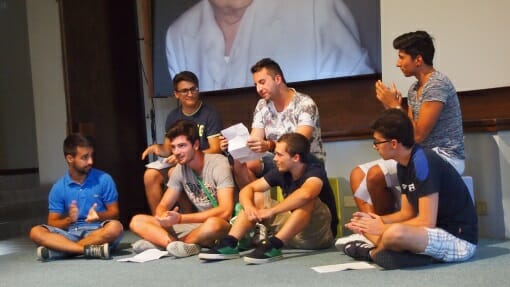
Aug 18, 2015 | Focolare Worldwide
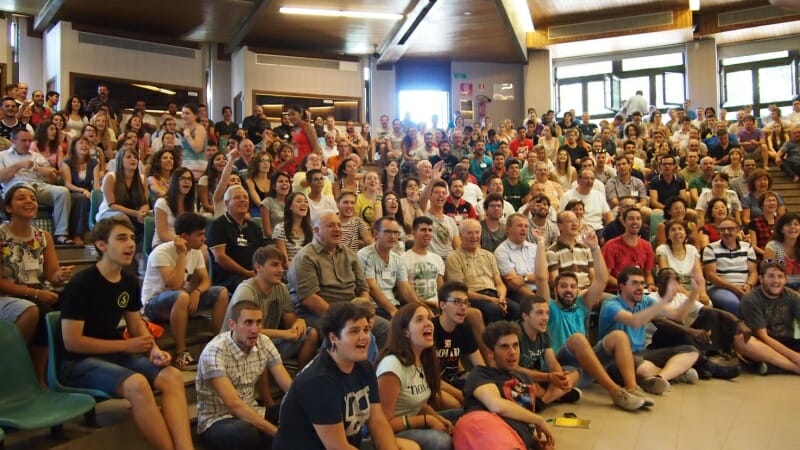 The somewhat quirky diversity of the hall at the Chiara Lubich Centre in Trent this year was a bit surprising: 250 young people between the ages of 16 and 30 from more than 20 countries; 70 priests and seminarians and some twenty adults who are all committed in living the spirituality of the Focolare at the parish or diocesan levels. What was the idea behind this meeting which was planned for the 2cnd to the 8th of August? What is the connection between the different cultural backgrounds? The first answer can be found in the title of the meeting: “Like yesterday,” and the second answer in the city of Trent itself. All of these young people and adults were gathered to reflect on the first generative seed of their own spiritual charism and to look back even physcially at the journey that has inspired the Focolare Movement from its beginnings. “The meeting opened in an atmosphere of explosive joy,’ Ludovico and Elonora recount. “The programme is meant to be an immersion in the life of those early days and the radicalness in living the Word.” The programme alternated between thematic topics and excursions to the places where the Focolare began: Piazza Cappuccini, Fiera di Primiero, Tonadico, Goccia d’Oro. “During the Mass in the Cappuchin church,” Zbyszek writes, “we declared ourselves ready with the help of Christ’s grace, to give our lives one for the other beginning from the small things of everyday life. In the place where God had sealed the pact of unity between Chiara and Igino Giordani (Foco), we also wishe to renew that mutual love which we wish to live as they did that yesterday.”
The somewhat quirky diversity of the hall at the Chiara Lubich Centre in Trent this year was a bit surprising: 250 young people between the ages of 16 and 30 from more than 20 countries; 70 priests and seminarians and some twenty adults who are all committed in living the spirituality of the Focolare at the parish or diocesan levels. What was the idea behind this meeting which was planned for the 2cnd to the 8th of August? What is the connection between the different cultural backgrounds? The first answer can be found in the title of the meeting: “Like yesterday,” and the second answer in the city of Trent itself. All of these young people and adults were gathered to reflect on the first generative seed of their own spiritual charism and to look back even physcially at the journey that has inspired the Focolare Movement from its beginnings. “The meeting opened in an atmosphere of explosive joy,’ Ludovico and Elonora recount. “The programme is meant to be an immersion in the life of those early days and the radicalness in living the Word.” The programme alternated between thematic topics and excursions to the places where the Focolare began: Piazza Cappuccini, Fiera di Primiero, Tonadico, Goccia d’Oro. “During the Mass in the Cappuchin church,” Zbyszek writes, “we declared ourselves ready with the help of Christ’s grace, to give our lives one for the other beginning from the small things of everyday life. In the place where God had sealed the pact of unity between Chiara and Igino Giordani (Foco), we also wishe to renew that mutual love which we wish to live as they did that yesterday.” 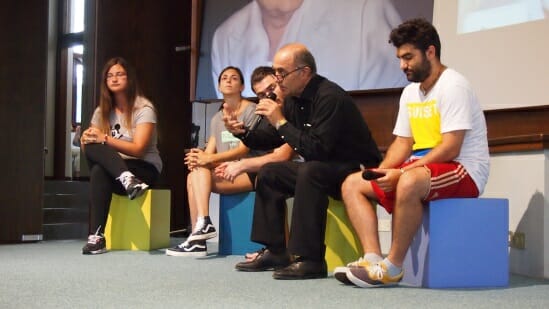 Then we had an opportunity to be enriched by presentations from experts in the fields of communication, interreligious dialogue and cooperation and development in the Action for a United World (AMU). Thanks to them we were able to reflect on communication and the challenges of our multiethnic and multi-religious society. Much time was dedicated to delving into the topics of immigration and welcoming thanks to the precious collaboration by the Cinformi Project, which presented the model of welcoming that has been proposed and applied by the city of Trent, placing itself at our service with active workshops involving two visits to refugee camps. Some of the most unforgettable moments of the meeting were spent with a hundred refugees who are waiting to see what the future will bring.
Then we had an opportunity to be enriched by presentations from experts in the fields of communication, interreligious dialogue and cooperation and development in the Action for a United World (AMU). Thanks to them we were able to reflect on communication and the challenges of our multiethnic and multi-religious society. Much time was dedicated to delving into the topics of immigration and welcoming thanks to the precious collaboration by the Cinformi Project, which presented the model of welcoming that has been proposed and applied by the city of Trent, placing itself at our service with active workshops involving two visits to refugee camps. Some of the most unforgettable moments of the meeting were spent with a hundred refugees who are waiting to see what the future will bring.  Several of them came to see us at the meeting. Rita confided: “I was so struck by Lamin, a young Muslim from Ghana who had written a poem to his mother and wished to read it to everyone. It was a poem filled with nostalgia but also hope. The eyes of these people says it all and they can never forget.” At the conclusion of the meeting two goals were set – one short-term and the other long-term: the World Youth Day meeting (WYD) in Poland; and the unity of the world in accordance with Jesus’s prayer that all be one for which we wish to spend our lives. “We leave committed to becoming the ‘living Word,” Danilo and Emmanuele write and to take this “pure water from the source” into our own lands and into our daily life in our peripheries, offering it to every neighbour that goes by.”
Several of them came to see us at the meeting. Rita confided: “I was so struck by Lamin, a young Muslim from Ghana who had written a poem to his mother and wished to read it to everyone. It was a poem filled with nostalgia but also hope. The eyes of these people says it all and they can never forget.” At the conclusion of the meeting two goals were set – one short-term and the other long-term: the World Youth Day meeting (WYD) in Poland; and the unity of the world in accordance with Jesus’s prayer that all be one for which we wish to spend our lives. “We leave committed to becoming the ‘living Word,” Danilo and Emmanuele write and to take this “pure water from the source” into our own lands and into our daily life in our peripheries, offering it to every neighbour that goes by.”
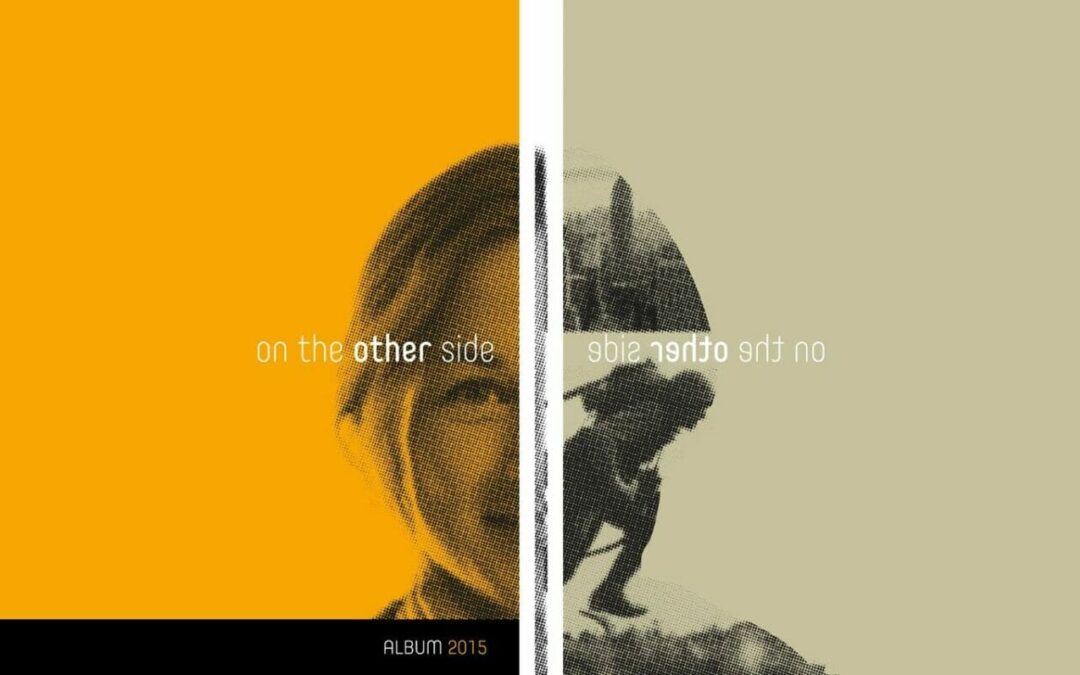
Aug 17, 2015 | Non categorizzato
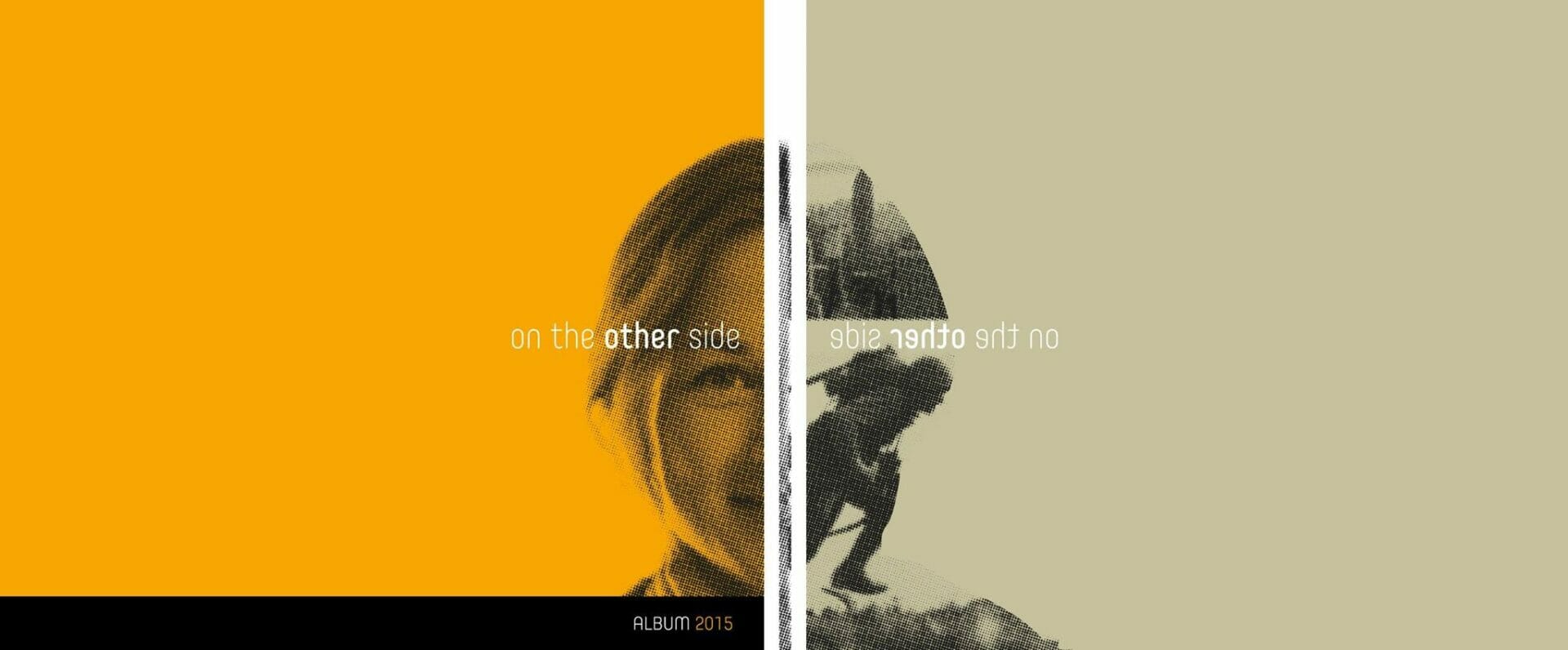 Eleven songs in five languages: English, Italian, Spanish, Portuguese and Korean. 47 minutes of pop-rock and world music, full of passion, force, vitality in music and words branded Gen Verde. According to the band’s manager, Sally McAllister, “This album is autobiographical and biographical at the same time.” It is an affirmation shared by all the members of the group. In fact, as they say, “It is biographical because the undisputed protagonist of this album is humanity that recounts its story: of people in the face of present-day challenges, the tragedies and conquests, history which marks the world’s pace, people moving along the roads of the planet in search of a land, dignity, and a place they can call their home.” But it is also autobiographical, since it is “imbued with our own stories and the musical cultures we come from.” “We wanted to try our hand,” the Gen Verde members say, “in recounting the moments and facts that marked a turning point in our lives. Different paths, with various departure points from physical sites and soul places that oftentimes are diametrically opposed but which all target that sole horizon of fraternity.” In fact, “Every piece tells a story, such as Voz de la verdad, a homage to Oscar Romero,” says the Salvadorean, Xochitl Rodríguez. And also Chi piange per te? – the cry of thousands of migrants on the banks of the Mediterranean, which continues to echo across Africa to Europe, and in every continent where people are forced to leave in order to survive. Another song You’re Part of Me is the interrupted story of the Korean people, who refuse to give in to the scandal of separation. The musical arrangement is K-pop, a genre that is very popular today with the young Koreans, and says the desire for unity is not an issue of 70 years ago, but is one of today, of this generation that will not give up.”
Eleven songs in five languages: English, Italian, Spanish, Portuguese and Korean. 47 minutes of pop-rock and world music, full of passion, force, vitality in music and words branded Gen Verde. According to the band’s manager, Sally McAllister, “This album is autobiographical and biographical at the same time.” It is an affirmation shared by all the members of the group. In fact, as they say, “It is biographical because the undisputed protagonist of this album is humanity that recounts its story: of people in the face of present-day challenges, the tragedies and conquests, history which marks the world’s pace, people moving along the roads of the planet in search of a land, dignity, and a place they can call their home.” But it is also autobiographical, since it is “imbued with our own stories and the musical cultures we come from.” “We wanted to try our hand,” the Gen Verde members say, “in recounting the moments and facts that marked a turning point in our lives. Different paths, with various departure points from physical sites and soul places that oftentimes are diametrically opposed but which all target that sole horizon of fraternity.” In fact, “Every piece tells a story, such as Voz de la verdad, a homage to Oscar Romero,” says the Salvadorean, Xochitl Rodríguez. And also Chi piange per te? – the cry of thousands of migrants on the banks of the Mediterranean, which continues to echo across Africa to Europe, and in every continent where people are forced to leave in order to survive. Another song You’re Part of Me is the interrupted story of the Korean people, who refuse to give in to the scandal of separation. The musical arrangement is K-pop, a genre that is very popular today with the young Koreans, and says the desire for unity is not an issue of 70 years ago, but is one of today, of this generation that will not give up.”

 Five years ago, the town was classified as having one of the lowest socio-economic communities in the Piemonte region. But the entire community learned about hospitality towards others and today, 30 refugees, almost all Africans, besides a family from Kosovo with three children, have been living for eight months now, in a housing unit owned by the Cottolengo Institute. “We have adopted them,” confided two eighty year olds sitting in the town square. They had done so during the war, specified the President of the “Pro Loco” organisation, with the Jews and the members of the Italian resistance movement. History repeats itself. The mayor, Lisa Giacomo did not have to convince himself and the 180 residents of the village. Out of these, only 90 live in Lemie all year round. It had already happened in 2011, when the problem of hosting the migrants and refugees arriving on the Italian coasts with rusty boats still was not such a burning issue. Already then, for Lemie, that arrival of ‘friends’ had symbolized the rebirth of the community The 12 children taken care of by educators and the parish priest were baptised in the parish Church during a ceremony which went down in the history of the town. It was a feast. All the families with the children were welcomed by families and other children of those alpine valleys.
Five years ago, the town was classified as having one of the lowest socio-economic communities in the Piemonte region. But the entire community learned about hospitality towards others and today, 30 refugees, almost all Africans, besides a family from Kosovo with three children, have been living for eight months now, in a housing unit owned by the Cottolengo Institute. “We have adopted them,” confided two eighty year olds sitting in the town square. They had done so during the war, specified the President of the “Pro Loco” organisation, with the Jews and the members of the Italian resistance movement. History repeats itself. The mayor, Lisa Giacomo did not have to convince himself and the 180 residents of the village. Out of these, only 90 live in Lemie all year round. It had already happened in 2011, when the problem of hosting the migrants and refugees arriving on the Italian coasts with rusty boats still was not such a burning issue. Already then, for Lemie, that arrival of ‘friends’ had symbolized the rebirth of the community The 12 children taken care of by educators and the parish priest were baptised in the parish Church during a ceremony which went down in the history of the town. It was a feast. All the families with the children were welcomed by families and other children of those alpine valleys.  “Of course, at the start we were a bit surprised,” Lisa explained, “the population here has a a very high age bracket average, and it’s not easy to open oneself to others. Or at least, this was not the case. I didn’t have to give a lot of explanations since no one asked any questions. Giving hospitality seemed but a natural thing .” And the situation today is still the same as in 2011. And as in the past, the men and woman that arrived from Libya and other sub-Saharian countries will have to work, and make themselves useful. “With the Province of Turin in 2011 we had also implemented some job offers. Now some are applying for ‘restitution volunteer work’ which is useful to them and also to us.” the mayor remarked. And not only do these ‘refugee friends’ wish to stay in Italy, but the community itself is asking them to stay. “The citizens immediately accepted them, but what’s more, welcomed them,” confirmed Lisa, “and a couple of residents found jobs as educators with an association related to a cooperative. Problems? “Only bureaucratic ones. They applied for protection as refugees, but the time frames are very long.” Then the transportation issues: “I will ask the agencies managing the coaches for Turin to help them, since I think it would useless to make them pay the bus tickets for Turin.” On asking the mayor if the village has been reborn due to the migrants, he smiles and opens his arms . “Look at this valley. It is full of second homes, that open only in summer. Many young people continue to leave, even if their bond with valley is still strong. The new people who have come have brought some liveliness. Just go to the playground on a sunny afternoon and finally you will see children playing, shouting, enjoying themselves. They have even saved the school.” Excuse me? “Certainly. Five children more in school allowed the school to keep more teachers and a better quality in education. What else can we ask of these friends we have welcomed among us? The family has been extended and Lemie is no longer small and marginal. We want to be a different village, new and open to all.” Original article in Italian: Città Nuova online
“Of course, at the start we were a bit surprised,” Lisa explained, “the population here has a a very high age bracket average, and it’s not easy to open oneself to others. Or at least, this was not the case. I didn’t have to give a lot of explanations since no one asked any questions. Giving hospitality seemed but a natural thing .” And the situation today is still the same as in 2011. And as in the past, the men and woman that arrived from Libya and other sub-Saharian countries will have to work, and make themselves useful. “With the Province of Turin in 2011 we had also implemented some job offers. Now some are applying for ‘restitution volunteer work’ which is useful to them and also to us.” the mayor remarked. And not only do these ‘refugee friends’ wish to stay in Italy, but the community itself is asking them to stay. “The citizens immediately accepted them, but what’s more, welcomed them,” confirmed Lisa, “and a couple of residents found jobs as educators with an association related to a cooperative. Problems? “Only bureaucratic ones. They applied for protection as refugees, but the time frames are very long.” Then the transportation issues: “I will ask the agencies managing the coaches for Turin to help them, since I think it would useless to make them pay the bus tickets for Turin.” On asking the mayor if the village has been reborn due to the migrants, he smiles and opens his arms . “Look at this valley. It is full of second homes, that open only in summer. Many young people continue to leave, even if their bond with valley is still strong. The new people who have come have brought some liveliness. Just go to the playground on a sunny afternoon and finally you will see children playing, shouting, enjoying themselves. They have even saved the school.” Excuse me? “Certainly. Five children more in school allowed the school to keep more teachers and a better quality in education. What else can we ask of these friends we have welcomed among us? The family has been extended and Lemie is no longer small and marginal. We want to be a different village, new and open to all.” Original article in Italian: Città Nuova online















